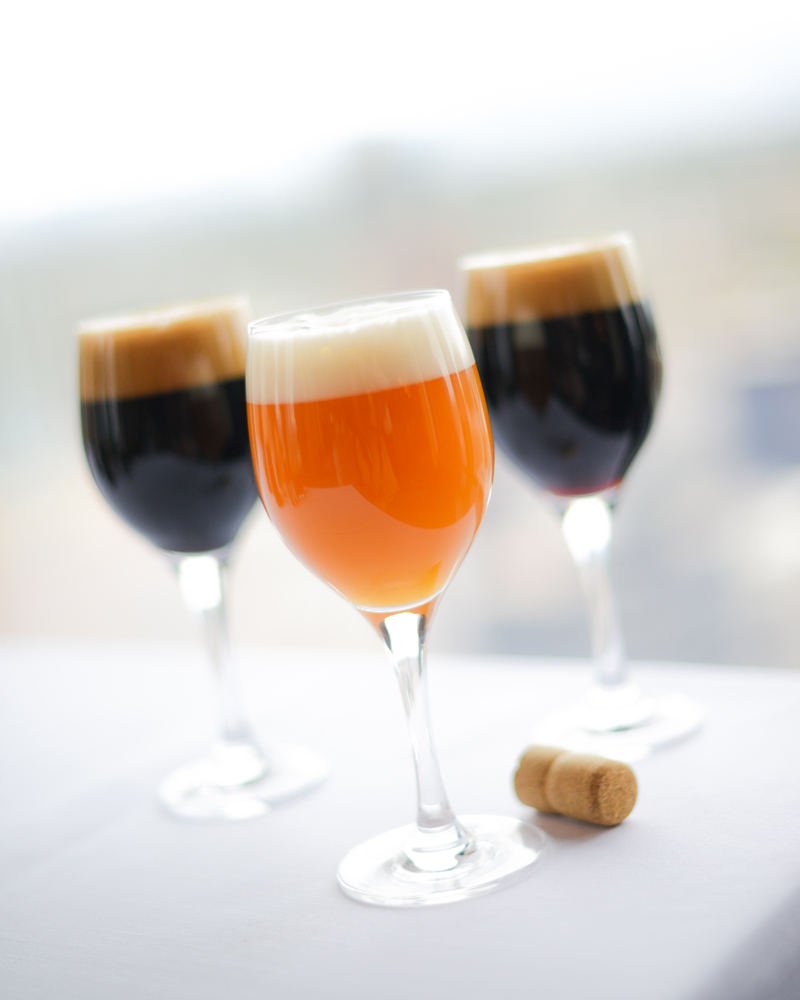If there is one step in the brewing process that gets overlooked, it’s probably conditioning. Conditioning is how a beer is carbonated and it can drastically affect the final outcome of the entire brewing process. Not only does carbonation contribute to a beer’s mouthfeel, but it also can mute flavors and help a beer develop new tastes upon aging. When it comes to the brewing process, conditioning is the grand finale.
Why Condition?
To put it simply, without conditioning, beer is flat. During primary fermentation, the yeast consumes sugars to create alcohol and emit CO2 which is allowed to escape. In order to reach an appropriate level of carbonation, brewers must facilitate higher pressures than those found after primary fermentation. To achieve this, brewers condition in airtight vessels where a required pressure can be maintained.
Most breweries use a popular method called forced carbonation. It’s consistent, easy and fast. Forced carbonation is exactly what it sounds like — forcing CO2 pressure into a tank until it dissolves in the beer. This method is a good way to dial in specific carbonation levels for brews that need to get on the shelves quickly.
(MORE: Crowlers are a Kick in the (gl)Ass)
Another method brewers use is bottle conditioning, where the beer will undergo a secondary fermentation. To achieve this, brewers must add a specific additional amount of yeast and sugar and bottle the beer. In the bottles, the yeast will continue to consume the sugar and eventually produce the desired amount of carbonation. Despite the name, this method of conditioning can take place in kegs, casks or any packaging that the beer will later be served from.
Bottle conditioning can be difficult and time-consuming, but ultimately rewarding. This is especially true in regards to aging. Since this method essentially removes all oxygen from the packaging and the naturally produced carbonation remains in the solution better, bottle conditioned beers will generally have a longer shelf life. Bottle conditioned beers will also continue to develop and grow in complexity over time as they undergo secondary fermentation.
“Fermentation in the bottle adds depth and character to the beer,” explains AleSong Brewing, who bottle conditions the majority of their beers. “Especially if you ferment with a wild yeast or interesting sugar source such as fruit or honey.”
(MORE: Groundbreaking Draught Beer Quality Study)
When it comes to enjoying your favorite bottle conditioned beers, Alesong Brewing provides some easy guidelinesOpens in new window to help you get the most out of them.
1. Chill your beer before serving
Alesong says chilling the beer will help the yeast consolidate at the bottom of the bottle. If it’s not chilled, beware: you could have a foam bomb in your hands.
2. Try not to shake it too much
It seems like a no-brainer, but the brewery says even pouring one glass at a time can stir up yeast from the bottom. That’s why in Belgium, beer is often served in a Lambic basket, which keeps the bottle tilted between pours.
3. Leave the final ounce in the bottle
If you’ve followed steps one and two, that last ounce will contain all of the yeast. It won’t hurt you if you digest it, but the beer won’t look as nice or taste quite as good as the rest of the beer if you pour it all in the glass.
CraftBeer.com is fully dedicated to small and independent U.S. breweries. We are published by the Brewers Association, the not-for-profit trade group dedicated to promoting and protecting America’s small and independent craft brewers. Stories and opinions shared on CraftBeer.com do not imply endorsement by or positions taken by the Brewers Association or its members.

Share Post